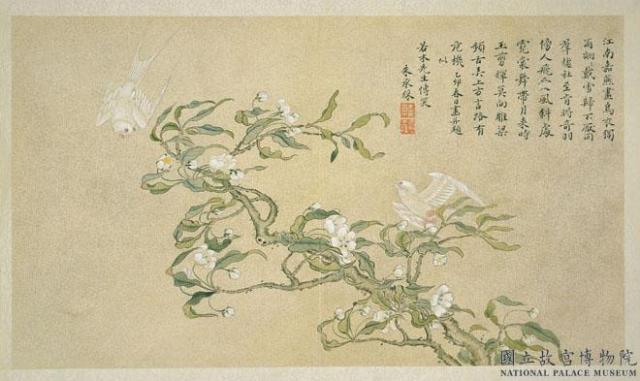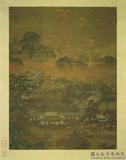明人畫幅集冊 冊 明朱承綵梨花白燕
推薦分享
資源連結
連結到原始資料 (您即將開啟新視窗離開本站)後設資料
- 資料識別:
- 故畫001298N000000013
- 資料類型:
- 類型:繪畫
- 型式:靜態圖像
- 著作者:
- 朱承綵
- 主題與關鍵字:
- 梨花 燕
- 出版者:
- 數位化執行單位:國立故宮博物院
- 日期:
- 明神宗萬曆四十三年(1615)
- 格式:
- 本幅 34.7x60.6公分、全幅 44.7x130.8公分
- 關聯:
- 石渠寶笈續編(養心殿),第二冊,頁1124-1126&*故宮書畫錄(卷六),第四冊,頁271&*胡起昆(西元十七世紀),上元(今南京)人。父宗仁,工詩畫,山水師倪瓚,晚出入王蒙、黃公望二家,起昆書畫頗有乃父之風。本幅溪山茅堂,左上方瀑布順山勢而下,隱沒於松林之中,右方小橋橫架,流水汨汨然於碎石之中。通幅山巖坡石均以牛毛皴出之。高士獨坐茅堂,衣紋簡靜而肯定,為全幅題目點出重心所在。本幅為「明人畫幅集冊」中之一幅。&*Sitting Alone in a Thatched Hut Hu Ch’i-k’un (17th century) Ming Dynasty Hu Ch’i-k’un was a native of Shang-yüan (modern Nanking) and the son of Hu Tsung-jen. He excelled at poetry and painting, with his landscape paintings initially patterned after that of Ni Tsan (1301-1374) and later after Wang Meng (1308-1385) and Huang Kung-wang (1269-1354). Hu Ch’i-k’un’s style of painting and calligraphy was quite similar to that of his father. In this painting is a thatched hut amidst streams and mountains. In the upper left is a waterfall cascading from the mountains, only to hidden in the pine forest. To the right is a small bridge with water rapidly flowing among the broken rocks. The mountains and rocks have all been rendered with fine “ox-hair” texture strokes. A lofty scholar is seen seated in a thatched cottage. The figure has been rendered simply yet assuredly, and is the focal point of the painting.
- 管理權:
- 國立故宮博物院
授權聯絡窗口
- 國立故宮博物院圖像授權、出版授權、影音資料授權-申請流程說明
http://www.npm.gov.tw/zh-TW/Article.aspx?sNo=03003061






